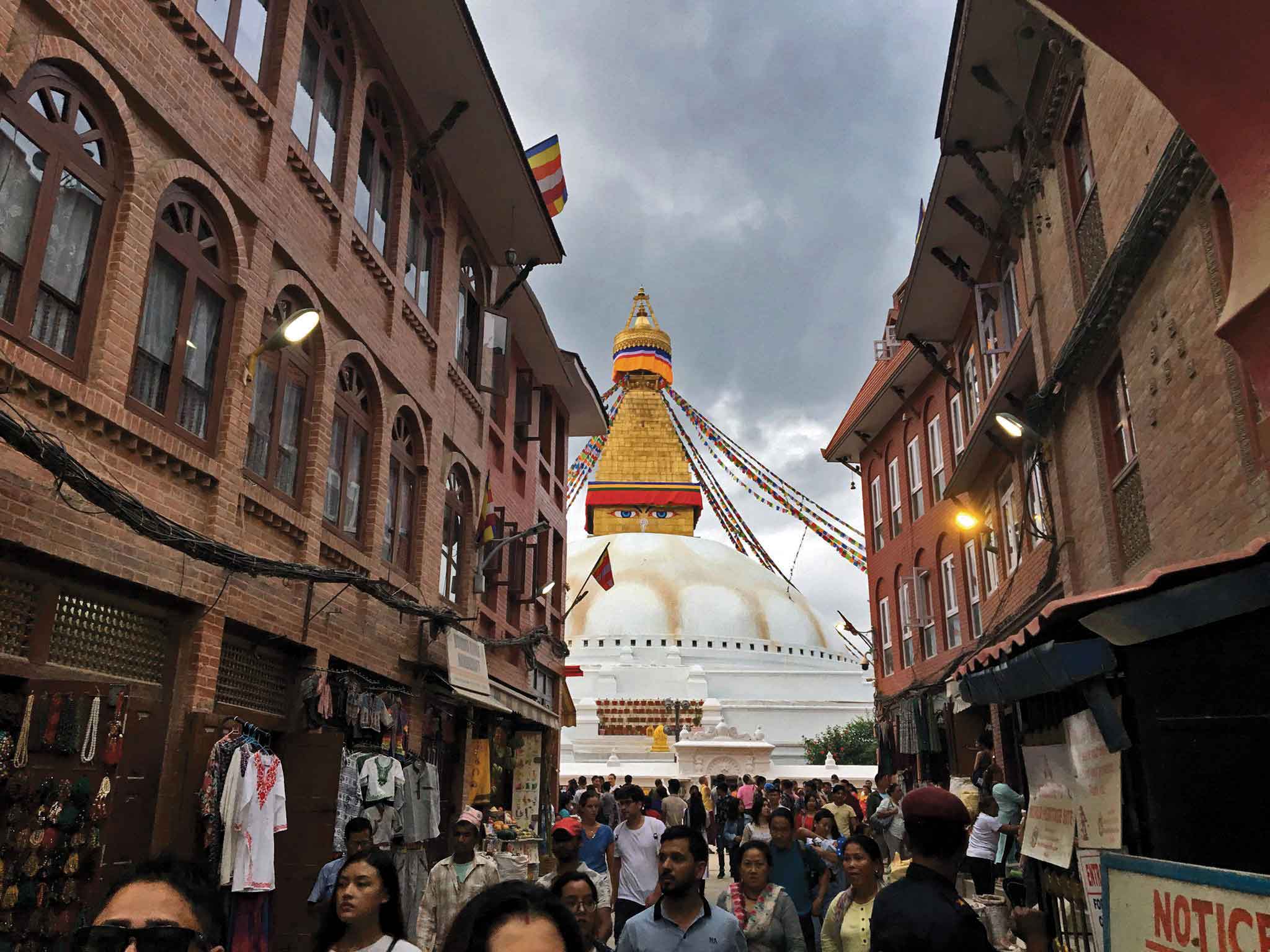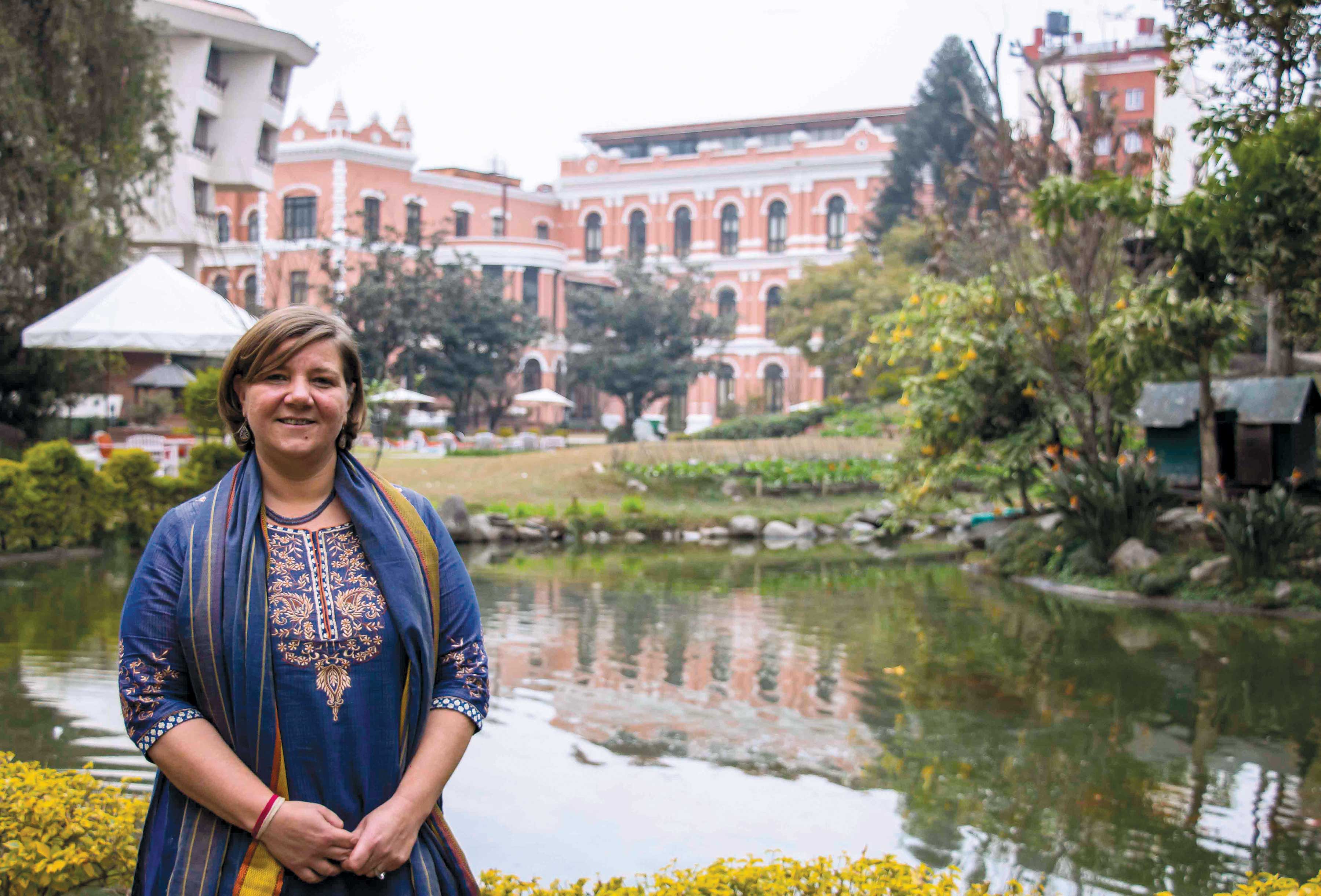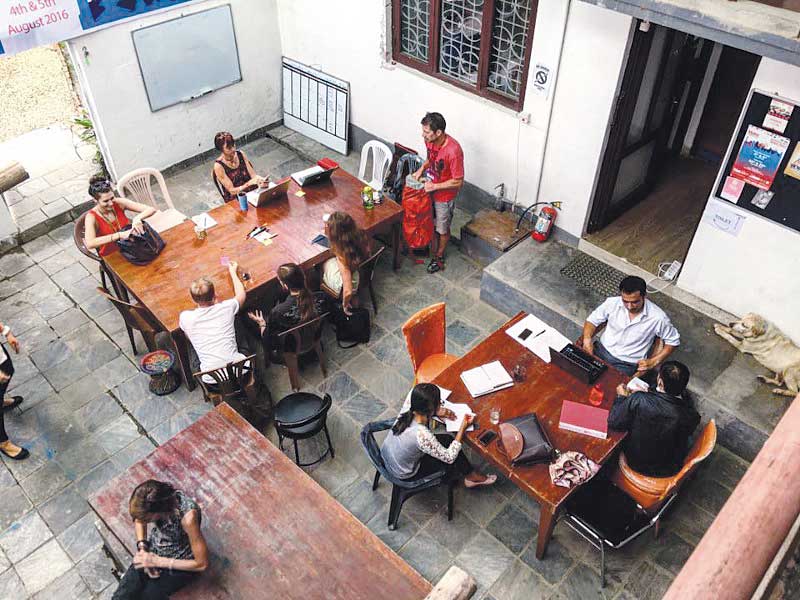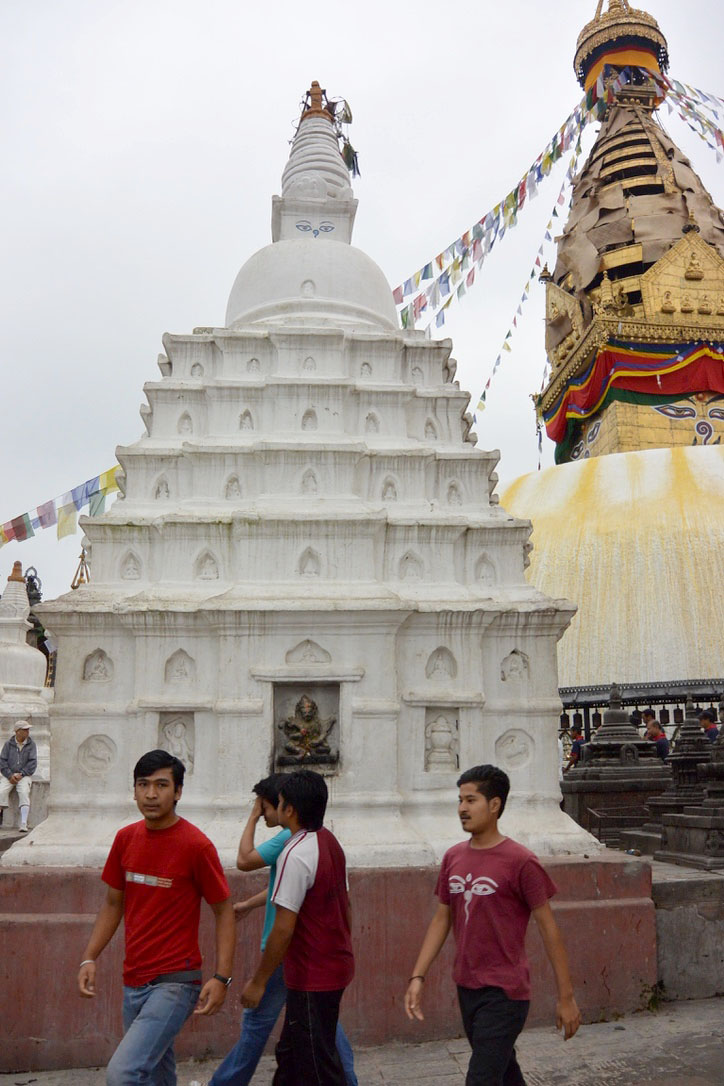Kirtipur literally means the “city of glory”. At the highest point of the eastern end of the ancient city is the glorious monument of Chilancho Stupa, historians tell us that it is perhaps the oldest monument in the “citadel” town. The whole complex is really beautiful and quite large and consists of the stupa at the top, a monastery (mahavihar) to the south and residential houses on all other sides. There are a number of smaller stupas at the four corners of the main stupa. Historians, local people and scholars all tell us that the foundation of the stupa goes back to the time of the visit by Mauryan Emperor Ashoka, which makes it about twenty three hundred years old.
 Kirtipur, the “citadel” city, lies to the south west corner of the Kathmandu valley. This city has a history of being able to resist attacks from external forces and have never given up without a real fight. Even today, during major political upheavals, the country waits to see which side the people of Kirtipur will choose before predicting which side will win. In 1880 Ambrose Oldfield wrote, “Kirtipur in the early history of Nepal was the capital of a small independent principality, but was afterwards annexed to Patan”. The location and layout of Kirtipur even today makes it very strategic and could serve as the logical place to take the last stand. Oldfield goes on to say,” It stands in a commanding position upon the level crest of one of the low rounded hills and overlooks the city of Kathmandu to the north and that of Patan towards the east….Kirtipur has never been an extensive city, but its almost impregnable position gave it an importance disproportioned to its size”.
Kirtipur, the “citadel” city, lies to the south west corner of the Kathmandu valley. This city has a history of being able to resist attacks from external forces and have never given up without a real fight. Even today, during major political upheavals, the country waits to see which side the people of Kirtipur will choose before predicting which side will win. In 1880 Ambrose Oldfield wrote, “Kirtipur in the early history of Nepal was the capital of a small independent principality, but was afterwards annexed to Patan”. The location and layout of Kirtipur even today makes it very strategic and could serve as the logical place to take the last stand. Oldfield goes on to say,” It stands in a commanding position upon the level crest of one of the low rounded hills and overlooks the city of Kathmandu to the north and that of Patan towards the east….Kirtipur has never been an extensive city, but its almost impregnable position gave it an importance disproportioned to its size”.
From the base of Kirtipur, as one climbs up the narrow lanes and stone steps to the high point of the Chilancho Stupa, one gets a sense that the entire design and layout of the town was done like a maze or labyrinth that was meant to fool the enemy. On the way up to the Chilancho Stupa, we will see the deepest well, small and large monuments, water tanks, and the beautiful houses with unique features and beautifully carved struts and windows.
The high wall and gates that you can see at the western end of the town gives you a real sense of control and safety. It is little wonder that the people of Kirtipur have earned a name for themselves as “glorious”. These are certainly not the ones to give up very easily. Try and visualize Kirtipur with the monuments on top, the residences on the slopes, the wall and gates, the forest all round and then the farms and fields extending to the far ends of the Kathmandu valley. We must all work to preserve this place.
For the visitor today, there are a few restaurants and eating places that have come up. What Kirtipur needs at this point in time are visitors who will help instill a sense of pride in the local heritage and help create a special identity for the way of life in Kirtipur. The city has master builders who have been employed all over the valley and beyond to build and restore temples and homes for centuries. They can and will restore Kirtipur to its old glory in no time.

TONI HAGEN PHOTOS OF KATHMANDU VALLEY 1950-1960
This important collection of photographs evokes a forgotten era when the Kathmandu...










